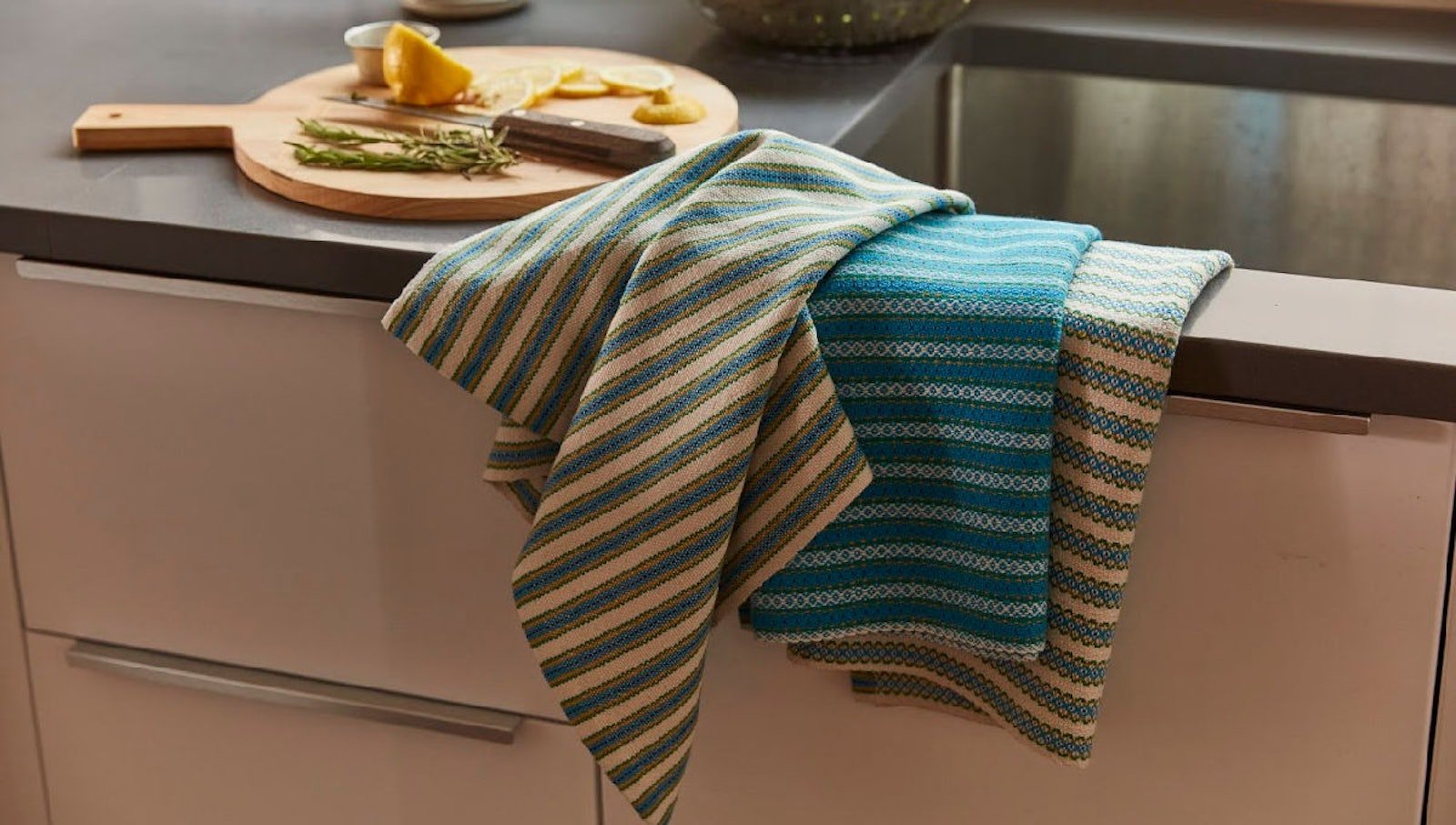A few years ago, my husband and I took a short vacation to Austin, Texas. Highlights of that trip included the gospel brunch at Stubb’s Bar-B-Q and a visit to the Lady Bird Johnson Wildflower Center. As luck would have it, we happened to visit the center during peak bluebonnet season, so we were treated to thousands of these beautiful blooms as we walked the nature paths. Before we left the center, I not only picked up a packet of seeds but I also immediately started designing bluebonnet themed towels in my mind for the friends who drove us to the center. It seems I am not the only weaver to find a creative spark among the blooms. In her Texas Bluebonnets Towels from the March/April 2019 issue of Handwoven, Cheryl Leib beautifully captures the essence of the bluebonnet in warp and weft. Here’s what Cheryl had to say about her design:
Cheryl Leib’s Texas Bluebonnets Towels are the next best thing towels.
Designer Cheryl Leib’s Statement
Early in my weaving life I vowed I would never waste my time weaving a dish towel, so I surprised myself by entering the Convergence 2018 dish towel exchange. By participating, I learned that towels are a wonderful weaving project. They are a chance to experiment and learn about weave structures and color interaction. At the exchange, I was amazed at the many approaches, unique patterns, and colors that the participants used. Both beginning and expert weavers couldn’t wait to take home five beautiful new towels.
Last March, I visited elderly aunts in Texas, where I admired the vast fields bursting with bluebonnets. Back at home, I remembered the delicate blossoms waving in the wind and felt inspired to weave a towel with flowers. I liked a friend’s rosepath sample, but in examining it closely, I discovered her draft didn’t quite meet my needs. I wanted symmetrical diamonds with a center spot that was always on the same shaft and was a different color than the rest of the design. I played around with her draft using weaving software and came up with a symmetrical “bluebonnet” design that uses an odd number of ends and has a center end that is always on shaft 1. Winding the warp and tying off all those color changes took time, but I love my little bluebonnets!
During the weaving process, I was flooded with memories of my grandmother “Nannie” and her flour-sack dish towels. Nannie faced many adversities in her life and was able to struggle through them and thrive. Just as the Texas bluebonnet survives drought or fire to return the next spring in full glory, my grandmother’s spirit endured and survived on the Texas frontier. I believe a simple utilitarian dish towel can connect generations, whether it is an embroidered floursack or handwoven bluebonnet towels.
Happy Weaving!
Christina
Project at a Glance
PROJECT TYPE: 4-shaft.
STRUCTURE: Twill and plain weave.
EQUIPMENT: 4-shaft loom, 22" weaving width; 12-dent reed; 2 shuttles; 2 bobbins.
YARNS: 8/2 unmercerized cotton (3,360 yd/lb; WEBS); 8/2 unmercerized cotton (3,360 yd/lb; Maurice Brassard et Fils); 20/2 unmercerized cotton or natural-colored sewing thread for hems.


